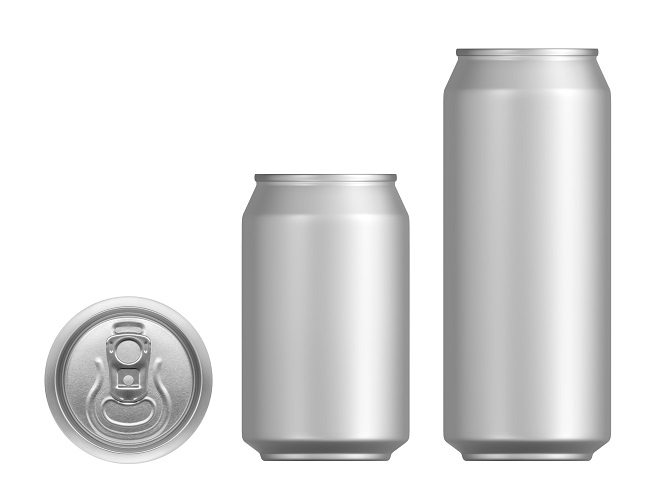
Why mini?
While overall soda sales are dropping,
one little contender is making soda companies a pretty penny. You have probably seen the mini soda cans, as advertised by
Coca-Cola,
Pepsi and other companies, are growing in popularity. With health concerns on the rise, many view the cans as a way to have a treat without overindulging, as each contain approximately 7.5 fluid ounces compared to your standard can of 12 fluid ounces. These smaller cans have been such a big hit on the market that you can now find them holding all sorts of beverages, especially water.
I get the mini soda cans seem hip, unique, fun and are packaged in a lower calorie size. I remember having mini bottles when I was little and road on the Amtrak train for the first time – and I thought they were cool. But, in reality, these mini cans are part of an issue that is anything but mini, cool or fun. When considered from a consumer and environmental standpoint, the mini cans don’t look great at all.
As these cans grow in popularity, however, the number of open pit bauxite mines and landfills increases correspondingly. Here is why: By making the cans smaller, you are creating more waste relative to the amount of product. I have no evidence to support the following statement, but I can only assume that smaller cans don’t actually decrease soda consumption on average. Instead, it is likely that people buying these mini cans are drinking the same amount of soda out of many more cans. With 8 of these cans to a package, these mini cans almost equal a 6 pack of traditional cans and have the extra disadvantage of being more expensive.
Where do they come from?
To better understand the effort it takes to get these little sodas into our hands, let’s look briefly at the aluminum industry.
The process of mining and producing
aluminum takes place on a massive global scale in order to create enough aluminum for our needs. To make aluminum, bauxite ore must be mined, and it is typically accomplished using
strip mining techniques. These strip mines are often massive sites that stretch across the landscape. For example, the largest bauxite mine in the world was photographed by NASA’s Terra Project and can be seen
here. The process rips apart the landscape, in addition to being extremely energy intensive.
To turn
bauxite into aluminum, the ore must be heated numerous times and passed through an electron current – all of which takes a tremendous amount of energy. From this point, the raw aluminum can finally be pressed and bent into the mini can before being filled with a sugary beverage.
If you must drink soda, remember to recycle your can, as recycling is one of the surefire methods to reduce mining. Not only is aluminum one of the most widely recycled materials, creating products from recycled aluminum is also much more
energy efficient than the process of manufacturing brand-new products. In fact, it is estimated that using recycling aluminum only requires
5 percent of the energy needed to create products from bauxite. Not only does aluminum recycling save energy, it is also can theoretically be
recycled forever without losing its qualities.
Yet, beyond the positive benefits of aluminum recycling, we still need to think about limiting needless waste. Worldwide nearly
half a trillion beverage cans are produced each year. With nearly 75 percent of these cans being made from aluminum, it is easy to see that keeping up with demand requires the continued production – and mining – of aluminum.
Contemplating the can
So, what does this all mean for the mini can? For me, the mini can is an example of what not to do. Instead of pushing little cans that are marketed behind the mask of lower calories, sugar or waste, we should be trying to decrease our aluminum intake. Since we can theoretically recycle aluminum forever, we should be trying to maximize recycling while decreasing use. There is nothing wrong with having a can of your favorite beverage. But, I do find something inherently wrong with wasteful designs to make more profit.
Similar in theme to my article about
greenwashing the adaptation of the mini can be seen as a way to create profit from a product that doesn’t need to exist. It is simply a marketing tactic that allows companies to charge a premium price for a product that creates more waste. Instead of buying small cans in an attempt to limit eating junk food or reduce aluminum use, why not try some healthy alternatives? Or, if you can’t kick the soda, why not buy a refillable container that you can purchase fountain drinks with?
Give up the soda?
If you feel like a soda but want to avoid the unhealthy options and needless waste, try this out: I buy a large container of sparkling water and then mix it with a little fruit juice to make a refreshing drink. Figure out a ratio of sweetness that works for you and experiment with different flavors.
Was I too harsh with the mini soda cans?
Let me know how you feel about them on Twitter at @ResfordRouzer.


